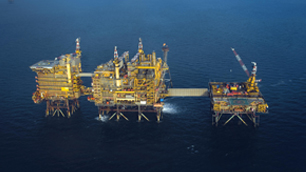Client challenge
 Centrica Energy is one of the largest gas producers on the UK Continental Shelf. We have been supplying lifting engineering services to our client’s Morecambe Hub for four years, examining each offshore crane every six months. To date, we have inspected 11 cranes: four on the main complex and a further seven on unmanned satellites.
Centrica Energy is one of the largest gas producers on the UK Continental Shelf. We have been supplying lifting engineering services to our client’s Morecambe Hub for four years, examining each offshore crane every six months. To date, we have inspected 11 cranes: four on the main complex and a further seven on unmanned satellites.
During a routine examination of a crane on one of the normally unmanned platforms, a major defect was discovered on a primary structural member. This meant the crane was no longer fit for service. Our client needed the crane back in use as soon as possible.
How we helped
We advised a third-party to carry out full non-destructive testing (NDT) and a wall thickness survey on the crane boom. This determined the actual loss of material and the boom’s residual strength.
Our principal lifting engineer assessed the survey results, finding that the crane could work on a 70% de-rate. The de-rate, alongside an approved operational risk assessment, enabled our client to continue to operate the crane safely during the shutdown period.
Following shutdown, a weld repair was carried out on the crane boom chord. Our surveyor witnessed the follow-up load test and NDT.
Applied expertise
The quick resolution of this issue brought a range of our expertise together, covering:
-
inspection
-
corrosion engineering
-
welding
-
NDT (Level III)
-
design appraisal
-
verification (lifting, crane gripper assembly inspection programme)
-
certification of load tests and slew bearing deferrals.
Business benefits
-
Safe operation of the crane during shutdown.
-
Minimised equipment downtime.
-
Full, prompt repair.
-
Non-destructive testing (NDT) to preserve equipment and material.
-
Certifying the post repair load test.
